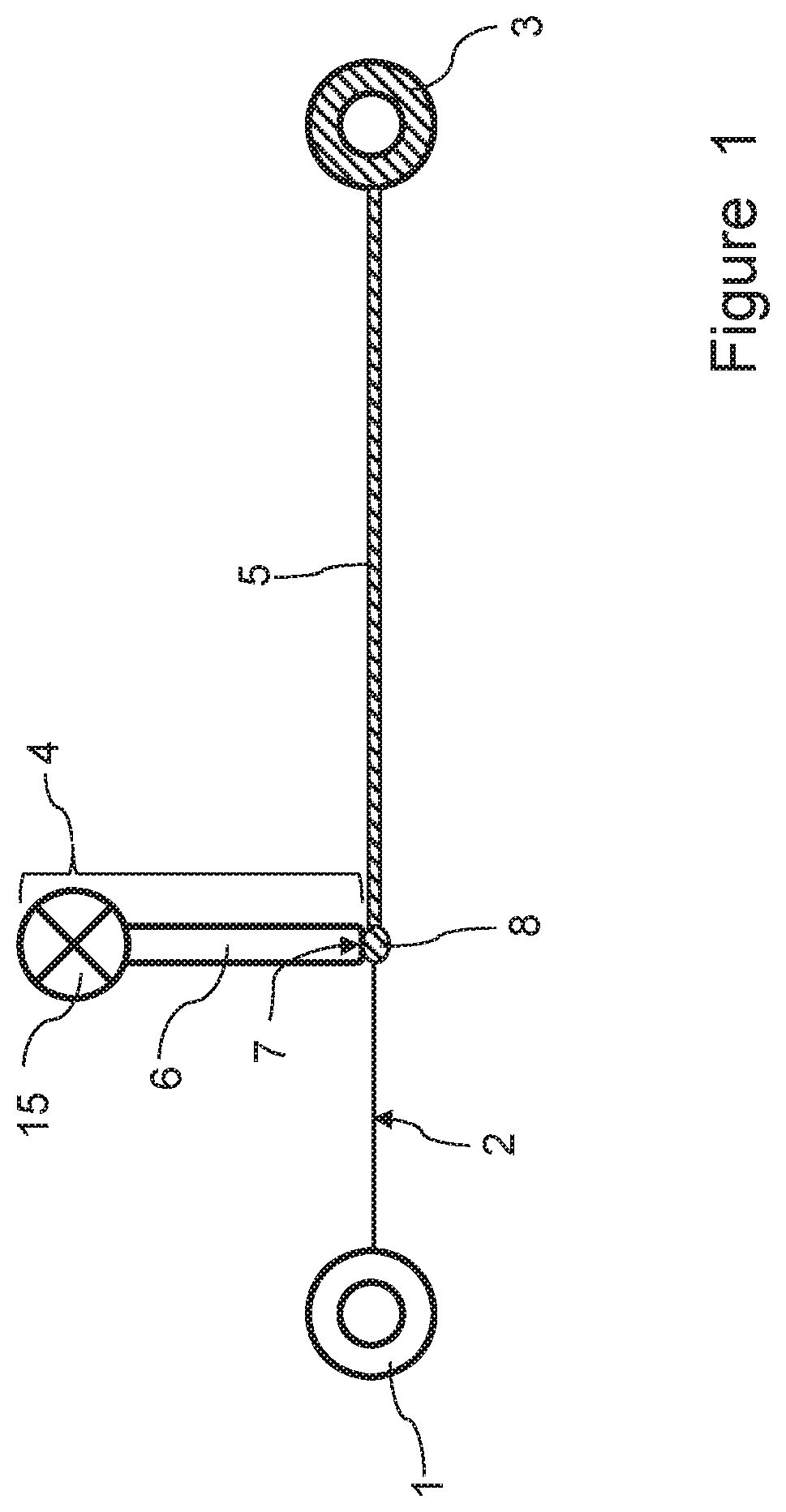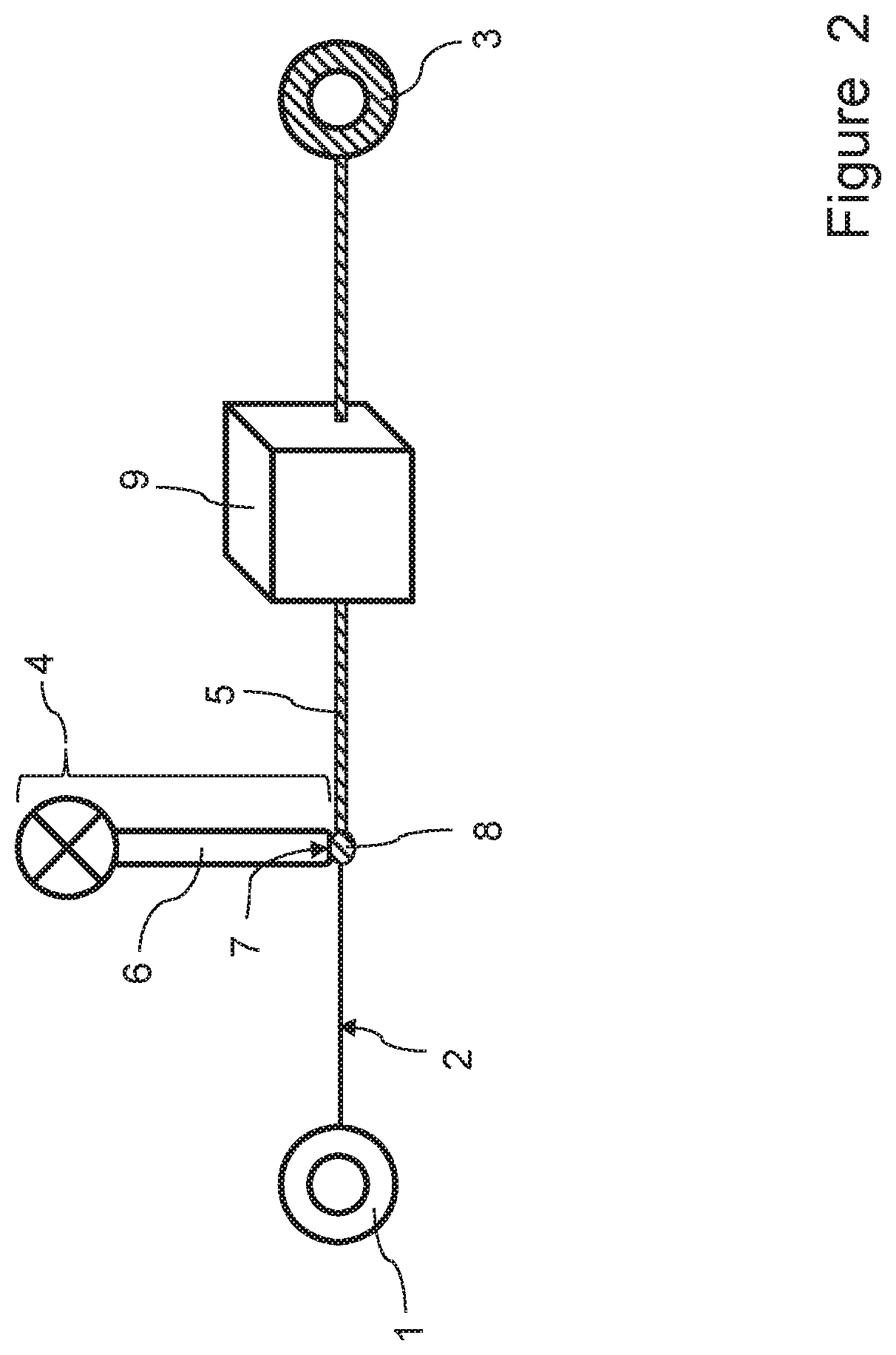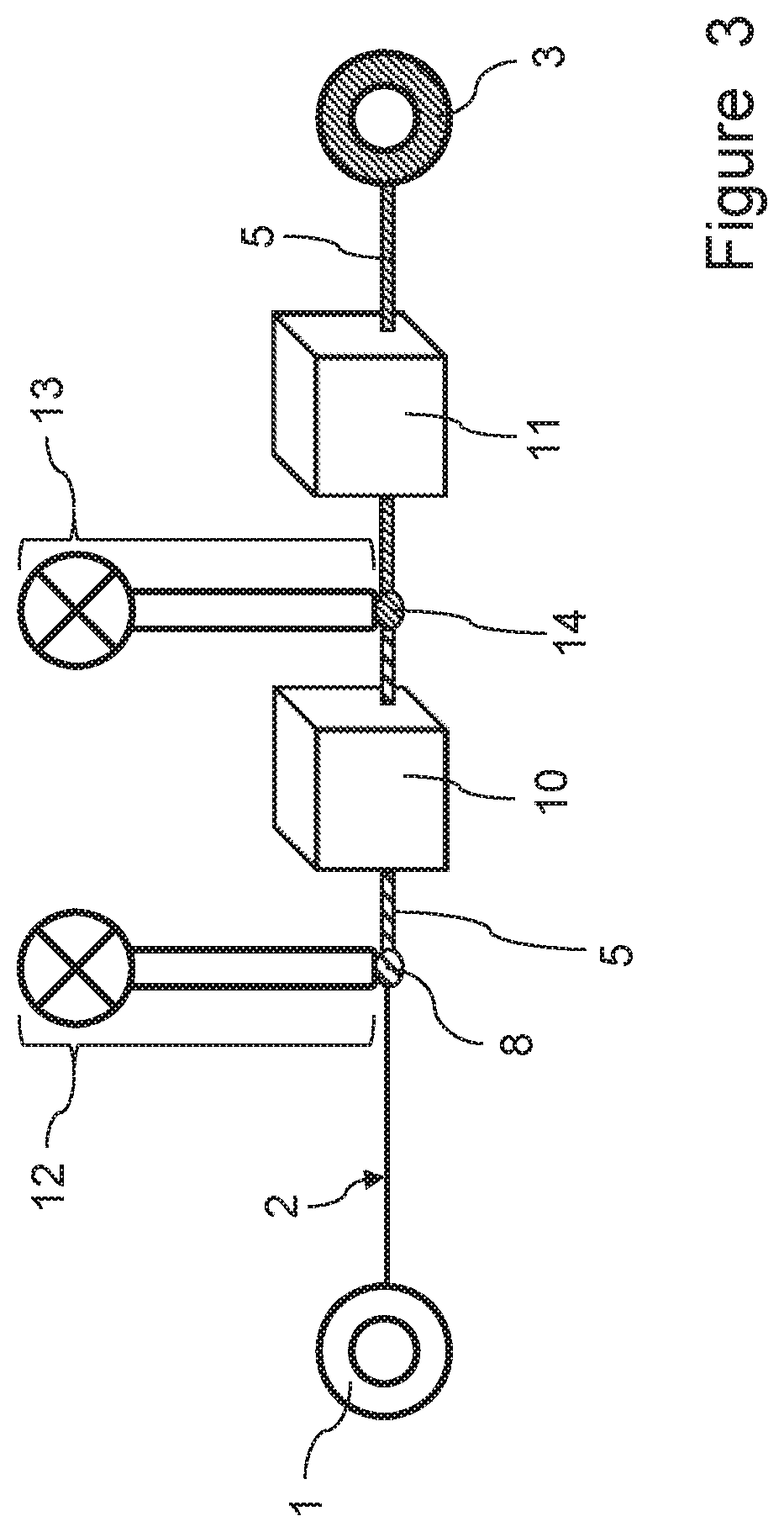Process for providing a culture of microorganisms to an elongated element
a technology of elongated elements and culture, which is applied in the field of textiles, can solve the problems of inability to provide a culture of microorganisms to an elongated element, inflicting severe disturbances to the biological content of the culture, and affecting the final treatment of the article. the effect of preventing the possibility of culture contamination
- Summary
- Abstract
- Description
- Claims
- Application Information
AI Technical Summary
Benefits of technology
Problems solved by technology
Method used
Image
Examples
example 1
[0242]A first experiment was carried out using the process and apparatus according to the invention, in which a microbial (bacterial) culture was injected onto yarn samples and the final dry yarn weight was measured in order to determine the amount of microbial (bacterial) cellulose deposited on the yarn. The experiment involved the following steps: About 25 g of yarn were provided on a suitable bobbin. 1200 ml of bacterial culture (BC) of Gluconacetobacter were incubated for 2 days at 200 rpm and 28° C. The bacterial cellulose culture was filtered by using a scrim in order to remove cellulosic fibers (produced during the incubation period). 1200 ml of culture were centrifuged at 5000 rpm for 15 minutes and concentrated in order to form a culture having a high concentration of 5.4×108 CFU / ml. 0.5 wt.-% of wetting agent were added to the culture. By using a syringe pump the concentrated culture was injected onto yarn samples (pump speed: 0.1 ml / min, unwinding speed of yarn source bob...
example 2
[0245]In a second experiment that was carried out, a bacterial culture was prepared and applied to a yarn as disclosed in the previous Example 1. After the bacterial culture injection onto the yarn, the yarn was wound around a yarn take-up bobbin, which was placed inside an incubator. The yarn provided with the injected bacterial culture was incubated in the incubator. Nutrients were supplied to the yarn inside the incubator by a feeding device. The amount of bacterial cellulose deposited onto the yarn was determined as being equal to 13% with respect to the initial weight of the yarn.
[0246]According to embodiments, the amount of microbial cellulose provided may be in the range from 0.08 to 0.15 g / m.
[0247]As above mentioned, the dried yarn provided with microbial cellulose may be dyed, e.g., indigo dyed, and used in the production of fabrics and / or garments.
example 3
[0248]A third example of a process according to the invention involves the use of microbially induced calcium carbonate (CaCO3) precipitation (MICP) by a culture of Bacillus sp. cells in an urea-CaCl2) medium containing 3 g / L of nutrient broth (Difco), 10 g / L NH4Cl, and 2.12 g / L of NaHCO3 (equivalent to 25.2 mM adjusted to pH 6.0 with 6 N HCl).
[0249]Methods and condition of supplying and culturing disclosed in above Examples 1 and 2 apply mutatis mutandis to Example 3.
[0250]By providing a yarn with a microbial precipitate, in particular calcite precipitate, advantageously, it is possible to increase the tensile strength of the yarn. Another advantageous effect of microbial calcite precipitation is that calcite provides for a whitening of the yarn. In this way, a yarn which can be easily dyed may be obtained.
[0251]Also, the present invention advantageously provides for an environmentally friendly way of processing yarns with respect of conventional processes, substances which may pol...
PUM
| Property | Measurement | Unit |
|---|---|---|
| distance | aaaaa | aaaaa |
| distance | aaaaa | aaaaa |
| flow rate | aaaaa | aaaaa |
Abstract
Description
Claims
Application Information
 Login to View More
Login to View More - R&D
- Intellectual Property
- Life Sciences
- Materials
- Tech Scout
- Unparalleled Data Quality
- Higher Quality Content
- 60% Fewer Hallucinations
Browse by: Latest US Patents, China's latest patents, Technical Efficacy Thesaurus, Application Domain, Technology Topic, Popular Technical Reports.
© 2025 PatSnap. All rights reserved.Legal|Privacy policy|Modern Slavery Act Transparency Statement|Sitemap|About US| Contact US: help@patsnap.com



